6 Best Outer Quad Exercises (with Pictures!)
Otherwise known as the ever-coveted “quad sweep”, the outer section of the quadriceps is a difficult muscle to develop in isolation.
Fortunately, a number of exercises are indeed available to target this part of the quads.
Not just any quadriceps exercise will work the outer quads - the exercise will need to feature a narrow stance or inward orientation of the feet. This allows for greater emphasis on the vastus lateralis, of which comprises the outer quads.
Good examples include front squats, narrow stance leg press, inward-toes leg extensions, hack squats, lunges, and sissy squats.
What are the Outer Quads - And What Exercises Work Them?
The “outer” quads or “quad sweep” refers to the vastus lateralis muscle of the quadriceps femoris - one of four muscles located at the front and sides of the thigh.
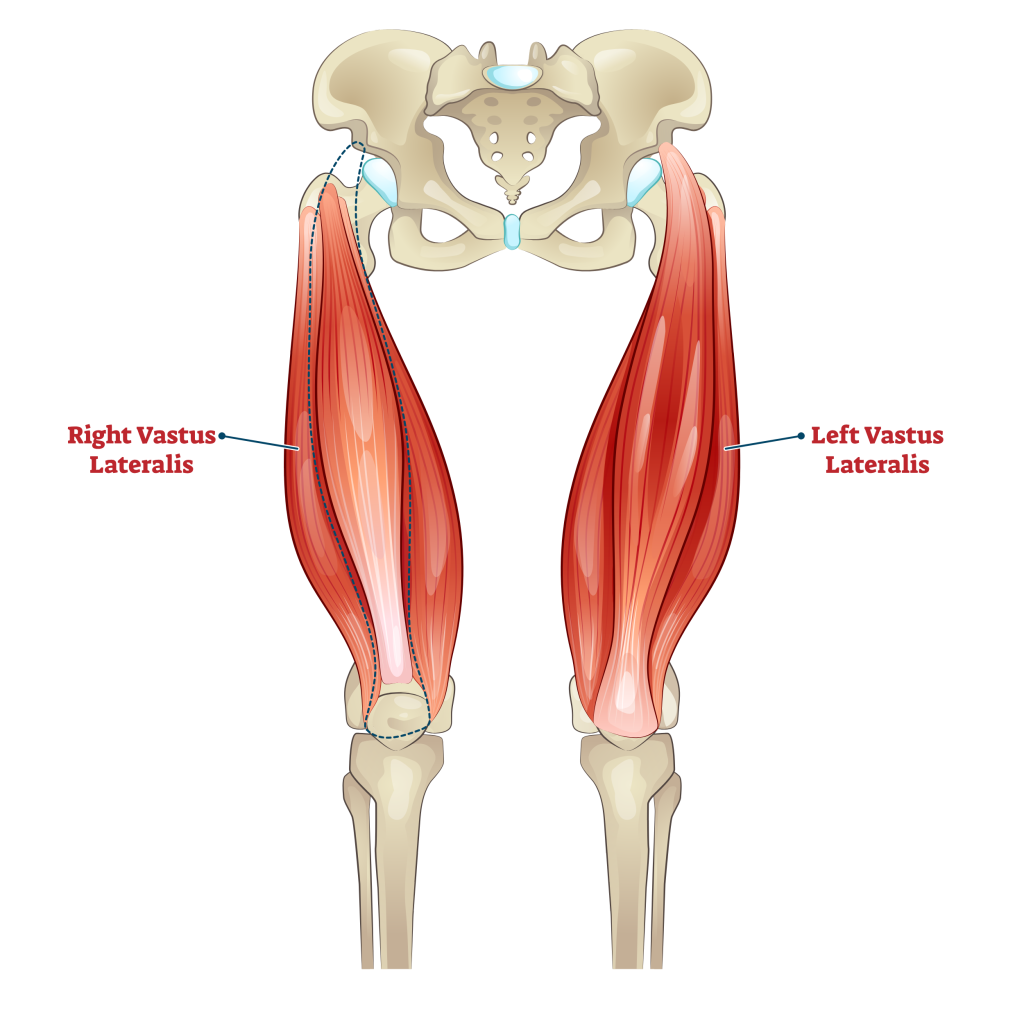
The vastus lateralis is responsible for stabilizing the knee joint and the thigh itself during a variety of different lower body movements; In addition, it also serves a role in knee extension.
How Do You Isolate the Outer Quads?
In truth, it is not possible to truly isolate the outer section of the quadriceps, as the entire muscle group functions as a single unit. Any sort of exercise that works the vastus lateralis will also work the other three heads of the quads as well.
However, it is possible to emphasize the outer quads instead. While there is some debate about how to do this, the majority of studies indicate that exercises featuring a narrow stance or inwardly-facing toes can help achieve greater emphasis on the vastus lateralis.
Of course, this is only regarding exercises that actually target the quadriceps through a full range of motion.
Best Outer Quad Exercises
1. Front Squats
A variation of the conventional squat where the barbell is placed on the chest - the front squat is the first exercise you should look at when wishing to target the outer quadriceps.
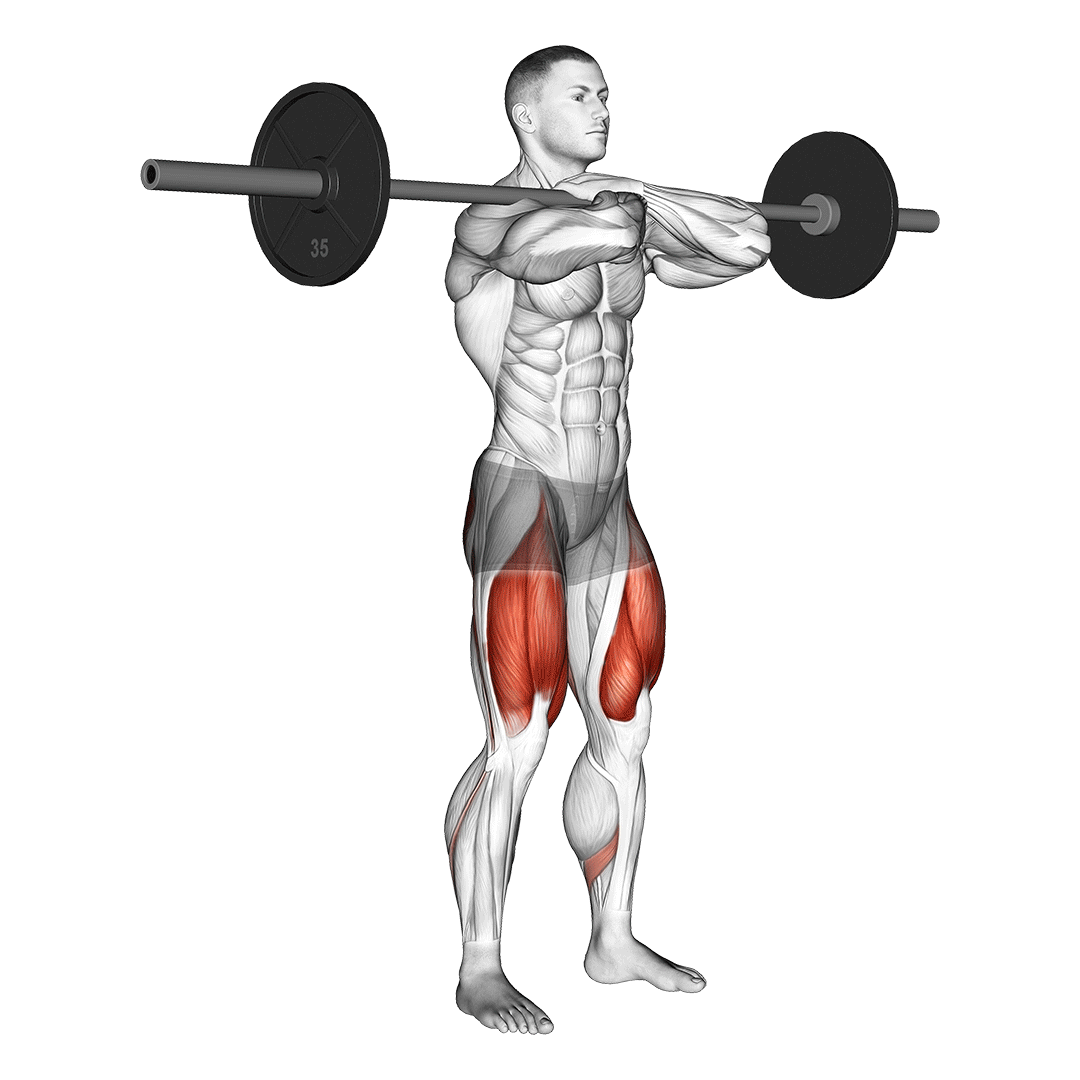
Because of its high level of intensity and very quadriceps-focused movement pattern, the front squat is considered an excellent exercise, regardless of whether you wish to hit the vastus lateralis or not. It can even function as a conventional squat substitute, in certain cases.
The front squat is a compound closed chain exercise often performed for moderate volume and a relatively heavy amount of weight.
Equipment Needed
The front squat will require a barbell and set of weight plates. A barbell rack will also be needed.
Benefits as a Quadriceps Exercise
The front squat is even more effective at targeting the quadriceps than the regular squat, especially in regards to the outer quads. This has made it a favorite among bodybuilders wishing to increase the width of their legs, as well as among athletes that wish to build quadriceps-specific strength.
How-to:
To perform a repetition of the front squat, the lifter will unrack a loaded barbell atop their chest shelf, hooking their fingers beneath so as to stabilize and secure it. The core should remain contracted, the chest upright, and the elbows pointing forwards throughout the exercise.
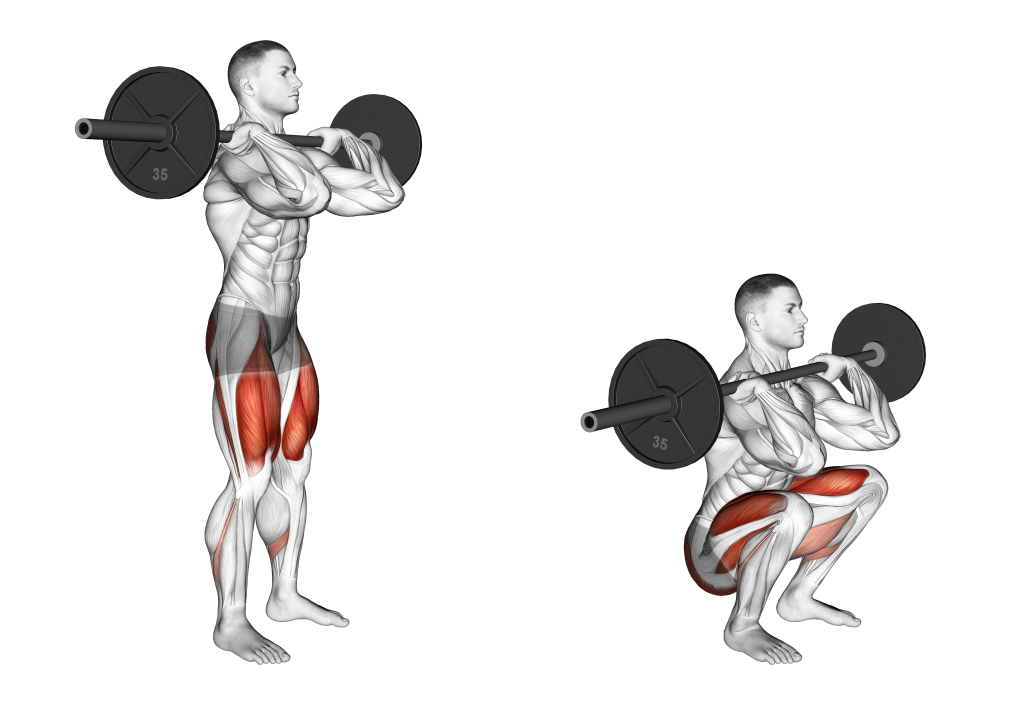
With the barbell secured atop the chest shelf, the lifter will set their feet hip-width apart, or otherwise narrower than would be used for a back squat.
Now in the correct stance, the lifter will push their pelvis backwards and bend at the knees, descending until the knees are bent at an approximate 90 degree angle.
From this point, they will drive through their heels and return to an upright position - thereby completing the repetition.
2. Narrow Stance Leg Press
Although you may be already familiar with the standard leg press, it may be modified to greater emphasize the outer quadriceps by simply altering the position of the feet on the sled.
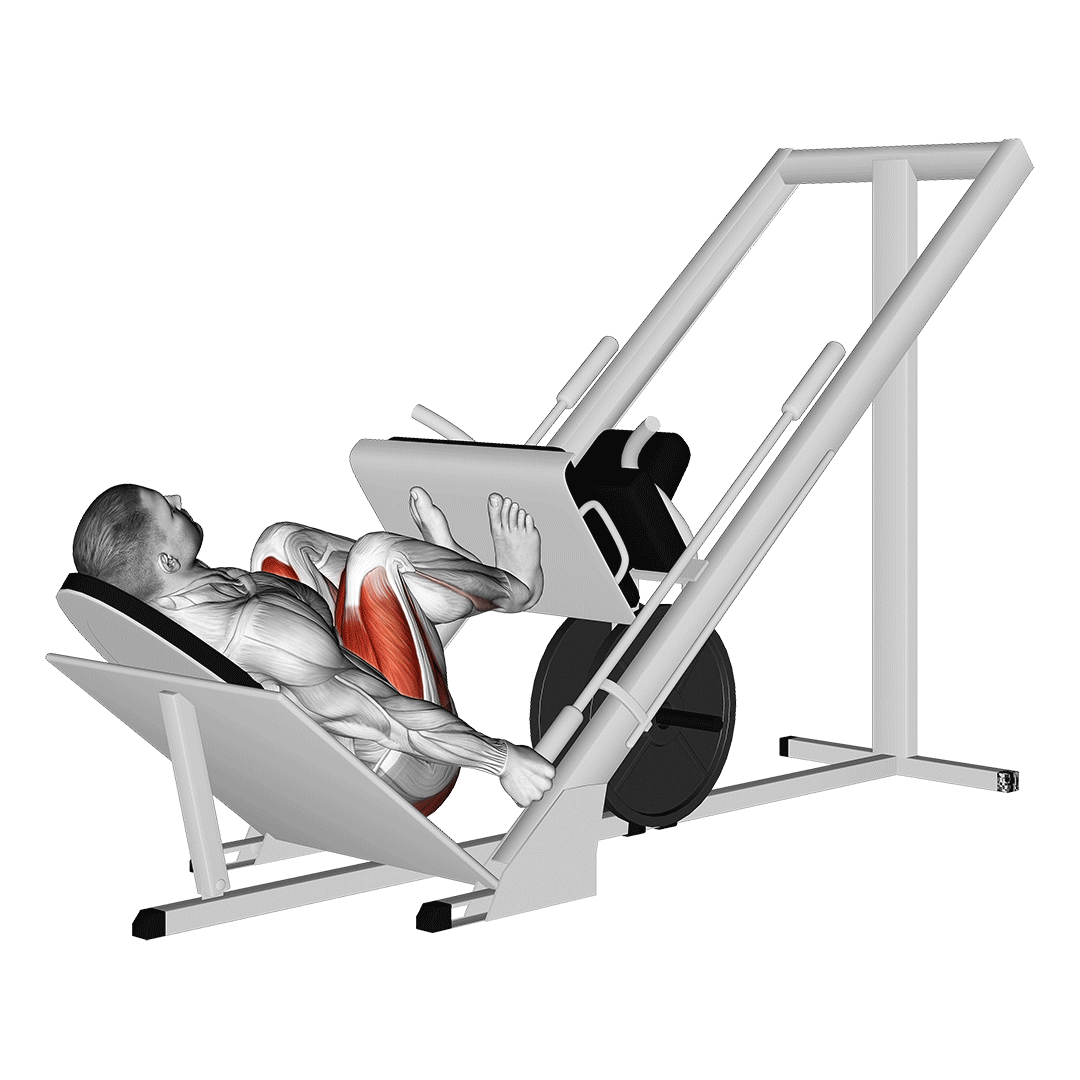
As the name implies, this alteration involves placing the feet closer together than would normally be the case. All other aspects of the leg press remain the same.
If you are unfamiliar with the leg press however, it can be described as a machine-based compound exercise that places the lifter within a seated position and requires them to drive a sled away from their body.
Equipment Needed
This particular exercise will need a leg press, as well as a set of weight plates if the machine requires it.
Benefits as a Quadriceps Exercise
The leg press is noted for being of similar intensity and movement to exercises like the back squat, all while still sharing the same benefits of being a machine-based exercise. This means a reduced risk of injury, greater adjustability and less energy being used for simple static contraction.
How-to:
Sitting within the leg press machine, the lifter will set their feet approximately hip-width apart near the lower section of the sled, toes pointing forwards or slightly outwards.
Example of foot placement on the leg press foot plate for quad engagement:
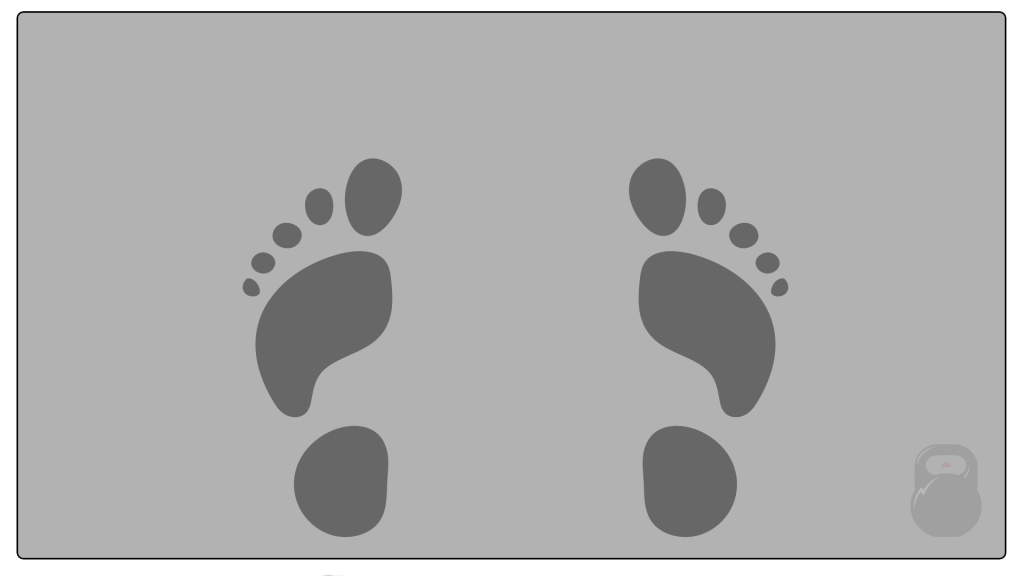
With their feet now positioned appropriately, the lifter then contracts their core, ensures their lower back is in a neutral position, and unlocks the sled safety mechanism - generally a pair of handles at either side of the seat.
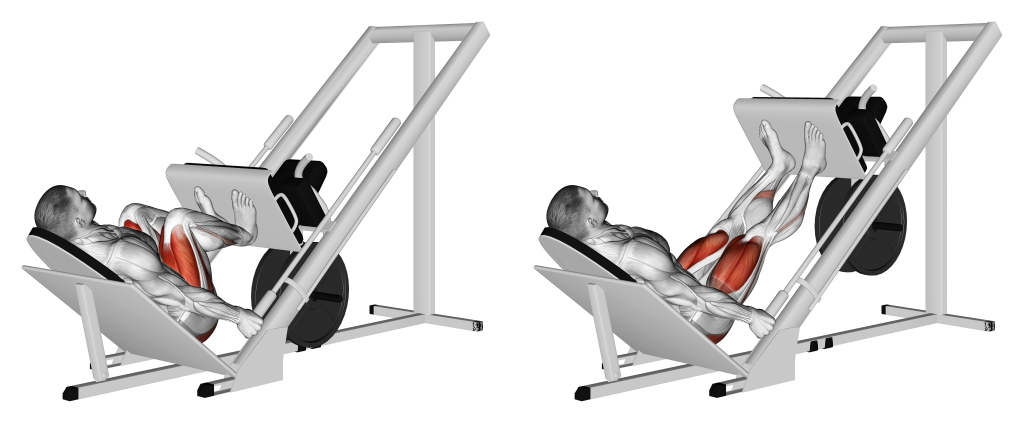
Once the sled is freely moving, the lifter contracts their quadriceps and drives through their heels. This should straighten the leg and push the sled away.
To complete the repetition, the lifter will then simply reverse the motion and return the sled to its original position.
3. Inward-Toes Leg Extensions
The leg extension is a machine-based quadriceps isolation exercise that can be further specified by altering the direction the toes are pointing in. For greater outer quadriceps emphasis, the toes should be angled inwards.
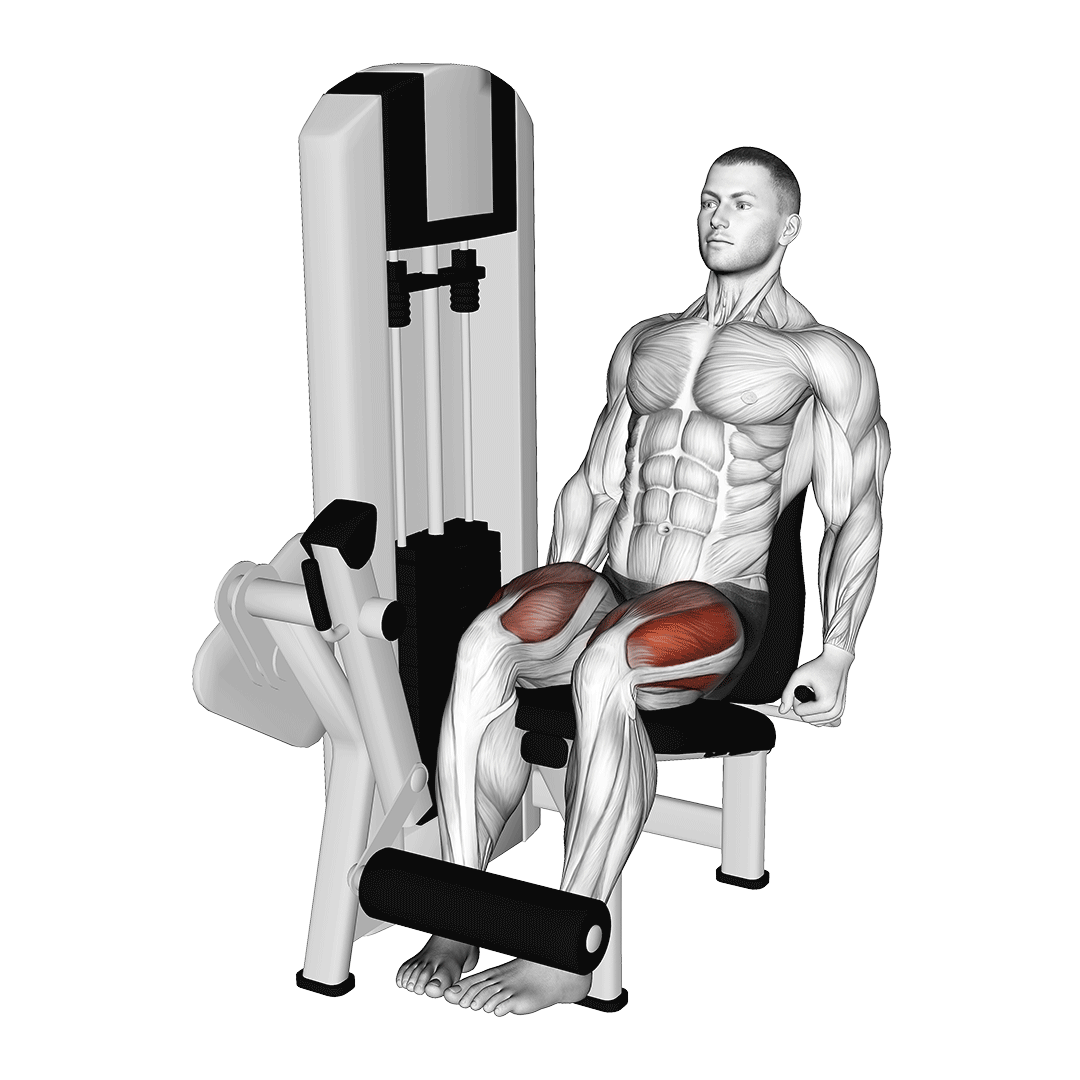
Leg extensions are one of the few quadriceps isolation exercises available, and are truly invaluable for building the outer quad in a manner that isn’t limited by other muscle groups found in the lower body.
Equipment Needed
The leg extension exercise will need a leg extension machine.
Benefits as a Quadriceps Exercise
As mentioned earlier, the leg extension is one of the few effective methods of isolating the quadriceps. This is made even more useful by its machine-based benefits, allowing for high volume capacity and easily adjustable resistance.
In addition, the leg extension is a particularly useful tool for maximizing outer quad volume in a workout that already features significant quadriceps work.
How-to:
To perform a repetition of the inward-toe leg extension, the lifter will seat themselves within the machine, adjusting it as needed and gripping the handles for stability.
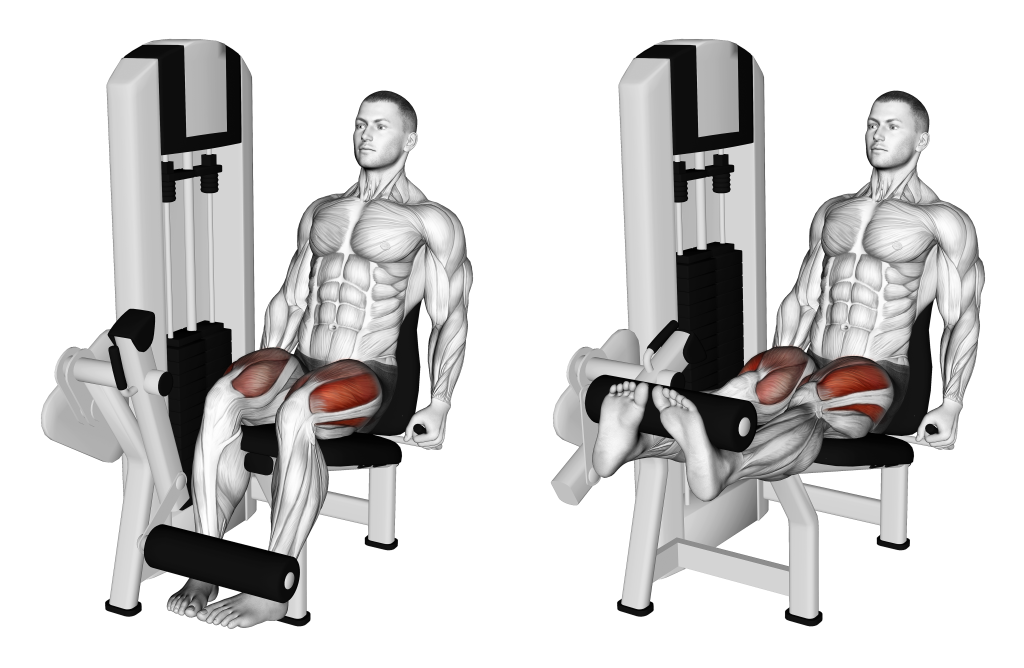
Angling the toes inwards for maximum outer quad recruitment, the lifter will then squeeze their quadriceps and extend their legs forwards - raising the pad until their knees are nearly locked out.
From this point in the repetition, the lifter will then simply lower their shins until back in the original position.
4. Hack Squats
The hack squat machine is yet another machine-based compound movement known for targeting the quadriceps to a fairly intense extent. Unlike other lower body machine exercises, the hack squat is performed in an upright position and with the back kept in place.
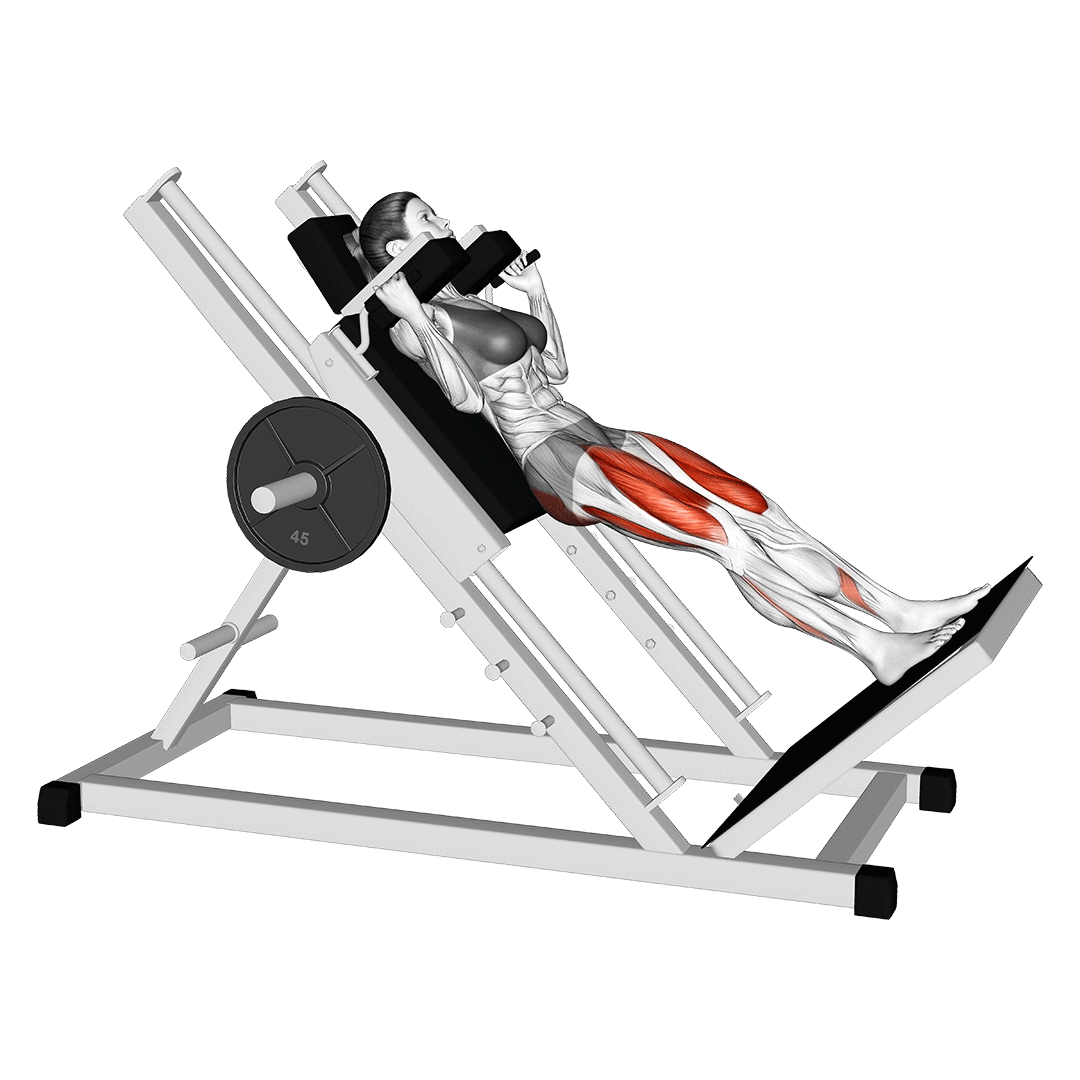
As is the case with the leg press, performing the hack squat with a narrow stance will help shift focus to the outer quadriceps - although there is no eliminating the inclusion of the glutes and hamstrings in the exercise as well.
Equipment Needed
The traditional hack squat is performed using a hack squat machine, of which may also require a set of weight plates if the resistance is not included as well.
Benefits as a Quadriceps Exercise
The hack squat is an excellent machine alternative to many other free weight squat variations, as it features a similar movement pattern despite a more quads-focused stance.
How-to:
To perform the hack squat with a greater emphasis on the outer quads, the lifter will need to set their feet closer than shoulder-width apart along the lower portion of the machine’s plate.
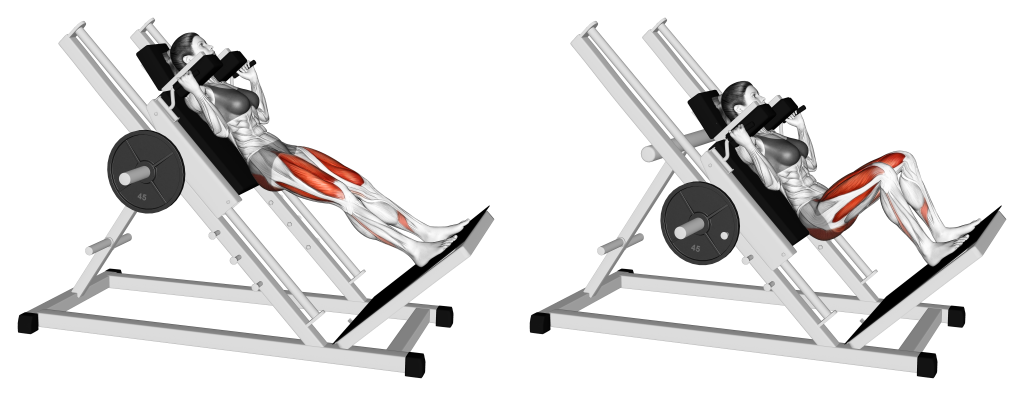
With their footing secured, they will then reach up and grip the handles at either side of their head, ensuring that their back is flush against the seat and their shoulders beneath the pads.
Bracing the core and ensuring the spine is in a neutral alignment, the lifter will then bend at the knees and push their hips back - lowering alongside the sled until they are parallel to the floor.
Now at complete depth, the lifter will finish the repetition by pushing through their heels and rising back to an upright position.
5. Lunges
Lunges are a readily available quadriceps exercise that may be scaled according to the lifter’s strength level with the addition of further resistance.
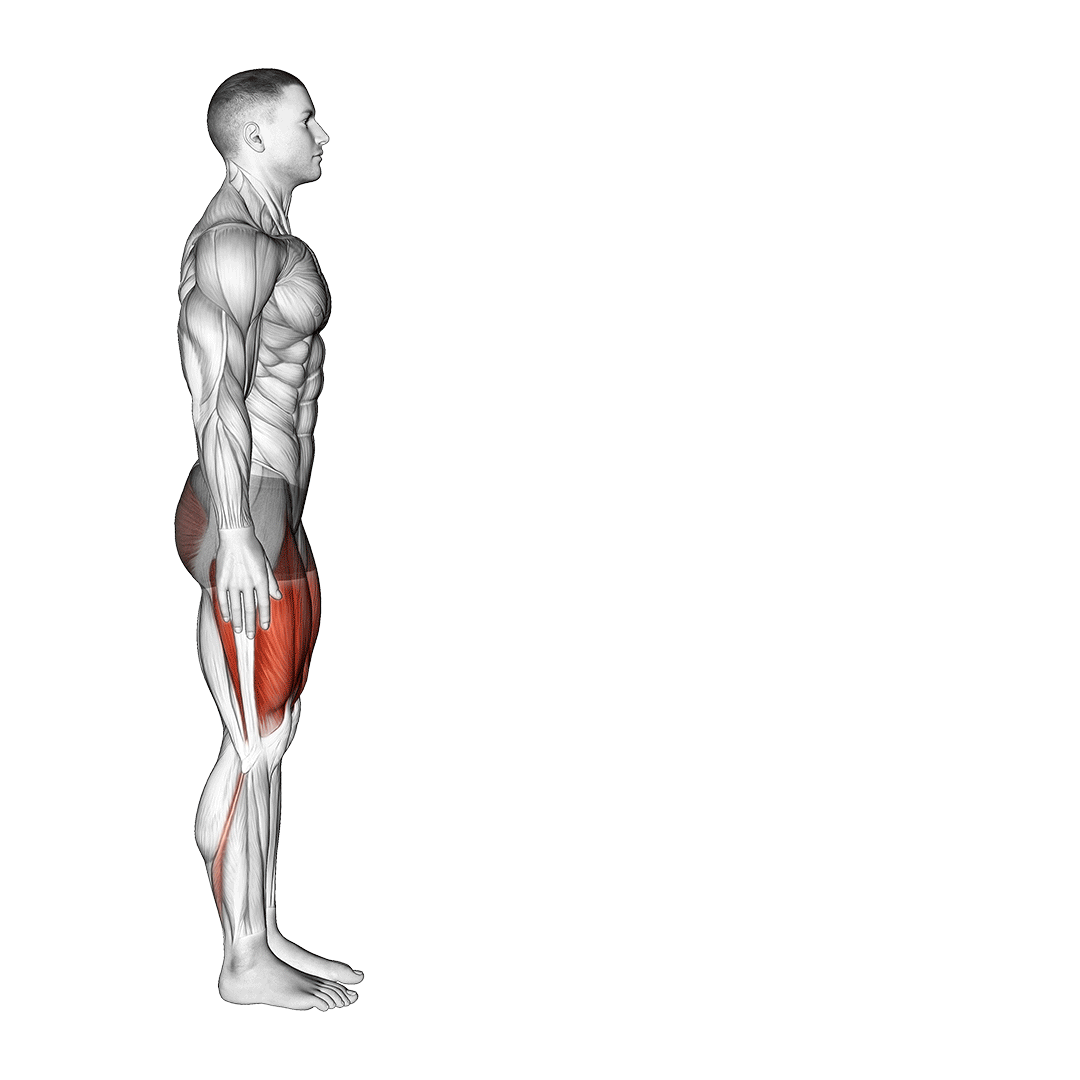
The lunge is a unilateral multi-joint lower body exercise involving the lifter taking an exaggerated step forwards, where it recruits the quadriceps through knee extension.
Alongside the quadriceps, lunges will also target the glutes and hamstrings.
This may be mitigated somewhat by reducing the distance in which the lifter sets their forefoot, thereby emphasizing the quadriceps more.
Equipment Needed
Lunges may be performed entirely without equipment, but lifters seeking greater intensity can grip a pair of dumbbells or kettlebells.
Benefits as a Quadriceps Exercise
Lunges are highly dynamic, and may be used for a wide variety of purposes ranging from simple bodybuilding to athletic training drills.
In addition to quadriceps mass and strength, lunges will also build the lifter’s sense of coordination, balance and mobility.
How-to:
To perform a repetition of the lunge, the lifter will stand upright with their feet set close together. If performing the exercise with weights, they may be gripped in both hands at the sides.
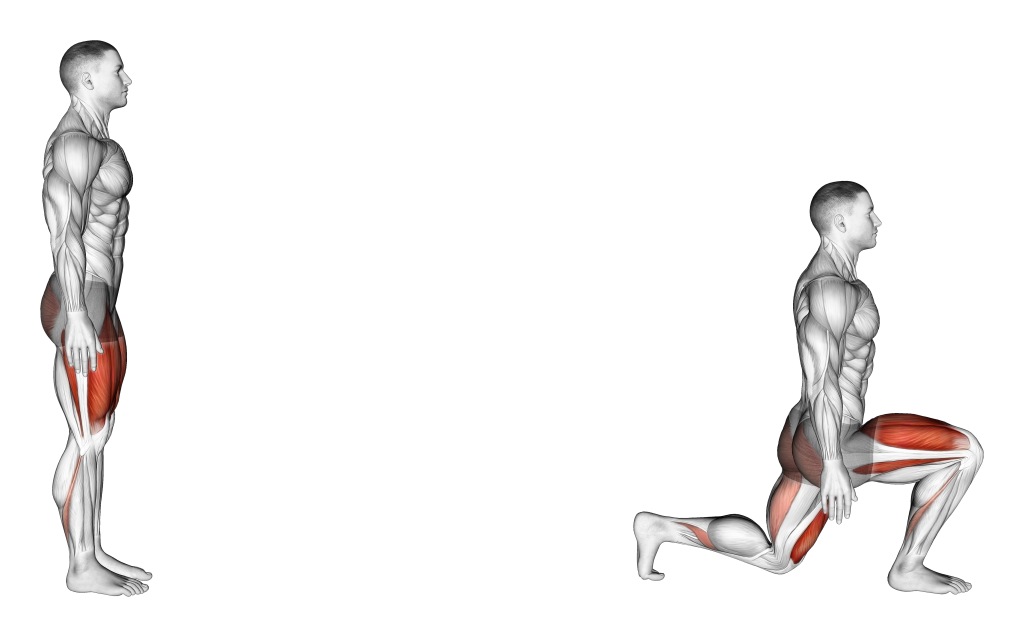
Beginning the repetition, the lifter will keep their chest upright and their spine neutral as they step one foot forwards, following the movement downwards until the back knee is nearly touching the floor.
Once the correct depth has been achieved, the lifter will squeeze their glutes and drive through their front-facing heel, returning to the original upright position to complete the repetition.
6. Sissy Squats
Despite the name, sissy squats are a highly intense and difficult bodyweight squatting exercise known for working the quadriceps quite effectively.
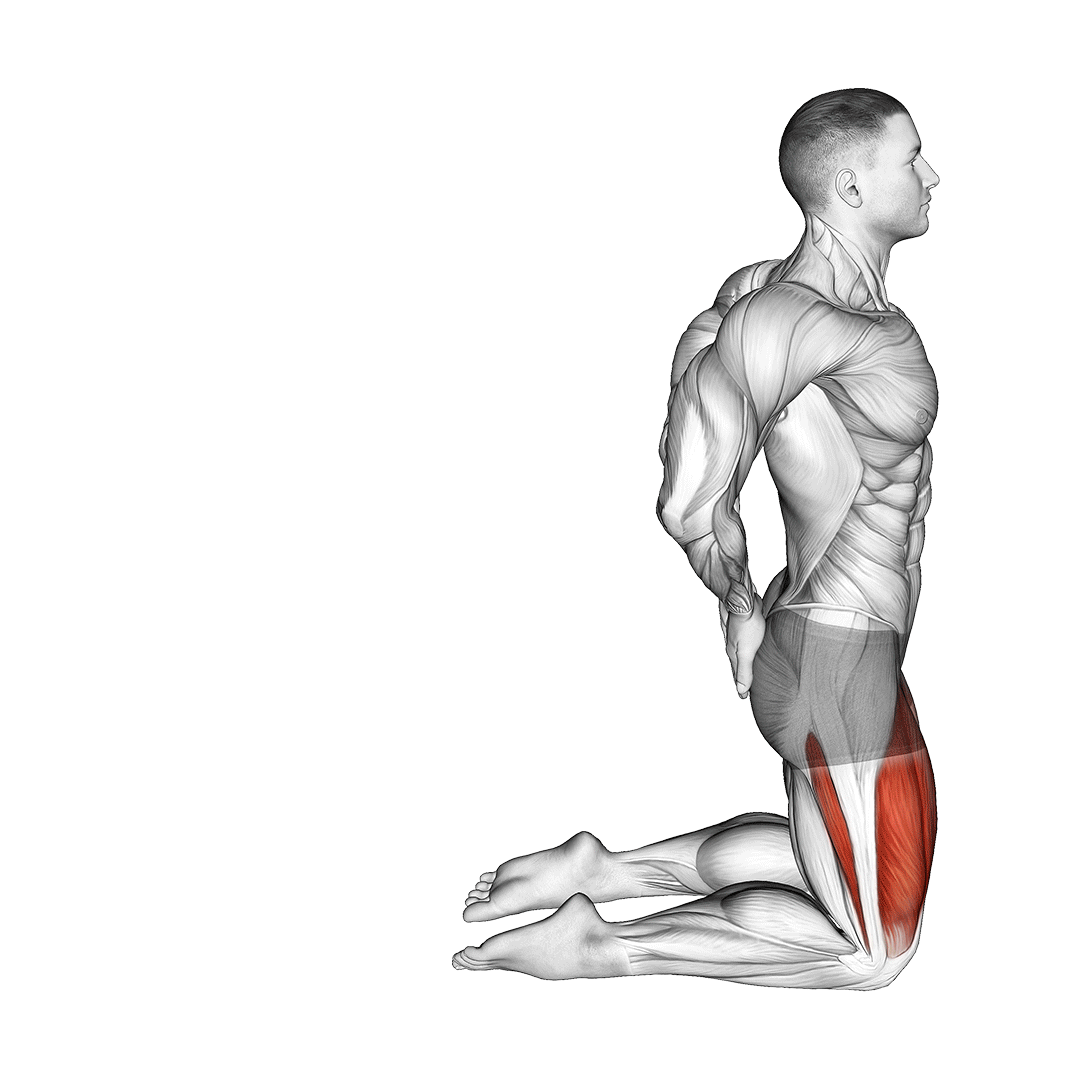
The sissy squat is a compound movement that works - apart from the quads - the glutes, hamstrings and the core alongside. Although it is traditionally a bodyweight movement, lifters may grip a weight at chest-height to further up the intensity of the exercise.
Equipment Needed
Sissy squats do not ordinarily require any equipment, although one may grip a chest-height object for stability if needed.
Benefits as a Quadriceps Exercise
Sissy squats are excellent for working the outer quadriceps when away from the gym, as they require no equipment and feature a stance that favors the vastus lateralis muscles.
In addition, due to the manner in which they are performed, they are also used for building general coordination and balance in athletes.
How-to:
Standing beside a stable object for balance (if needed), the lifter will set their feet narrower than shoulder-width apart, toes pointing forwards or slightly outwards.
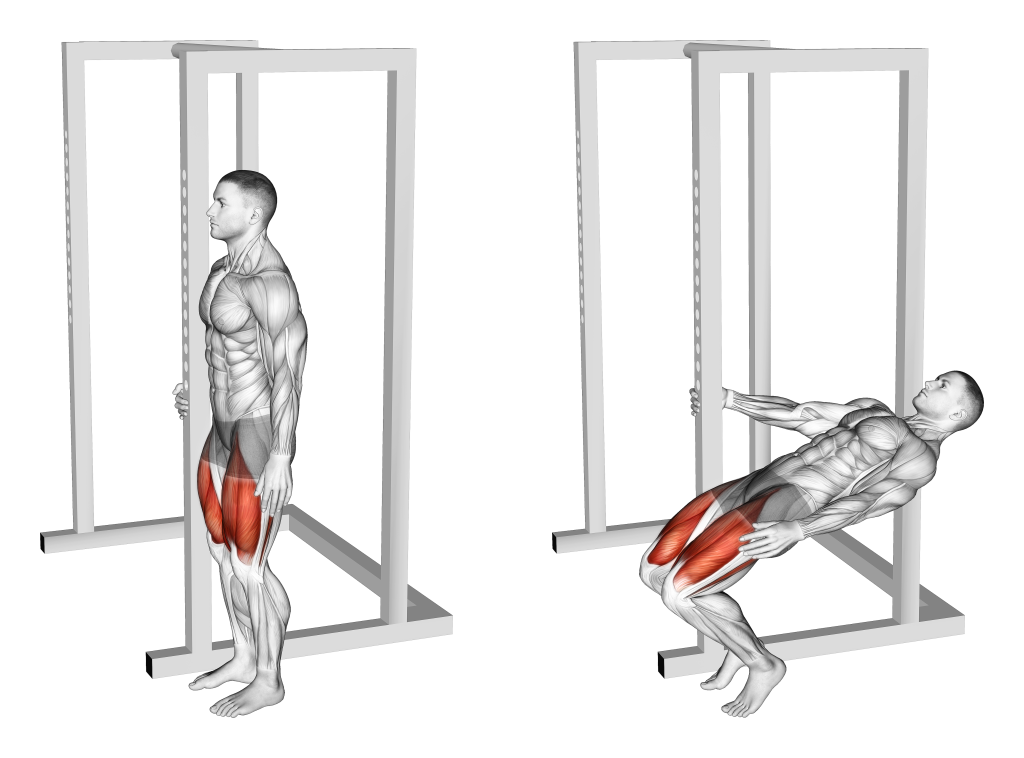
Beginning the repetition, the lifter will push their pelvis backwards and bend the knees forwards, as if attempting to kneel on the floor. As they do so, they will lean their torso backwards, rising up onto their toes.
The repetition reaches its apex point once the shins are nearly parallel to the floor - where the lifter will then drive their forefeet into the ground and squeeze their quadriceps, rising back to a standing position.
Once back in a standing position, the repetition is considered to be complete.
Frequently Asked Questions (FAQ)
What is the Quad Sweep?
The term “quad sweep” refers to the sweeping curvature of the outer thighs in muscular individuals. This is the vastus lateralis muscle of the quadriceps femoris muscle group.
Is the Quad Sweep the Same as the Teardrop?
Not quite - the “quad sweep” refers to the vastus lateralis of the quadriceps muscles, whereas the “teardrop” refers to the vastus medialis at the inner section of the quadriceps.
Why are my Inner Quads Bigger Than my Outer Quads?
It is not uncommon for one section of the quads to be bigger than the other. In most cases, this is a simple result of training programming.
In the case of a more dominant inner quadriceps muscle, it is likely due to your training favoring wide-stance squats or exercises of a similar nature.
Other Tips on Building Your Quad Sweep
Once you’ve got your outer quad exercise down, you’ll need to optimize a few other aspects of your life in order to truly build a better quad sweep.
The first is to ensure that proper recovery is taking place. Avoid training the quadriceps to an excessive extent, or too frequently; 2-3 times a week is more than sufficient.
Second, having truly well-defined outer quads comes down to body fat storage obscuring your muscular definition. If you wish to maximize the visibility of your outer quads, ensure your diet is structured according to your training needs.
Finally, avoid exercises that can potentially injure the quadriceps or knee joint. This includes performing any sort of exercise improperly. If you are unsure of how to perform a certain exercise safely, seeking out the advice of a professional coach is a good idea.
References
1. Lee TK, Park SM, Yun SB, Lee AR, Lee YS, Yong MS. Analysis of vastus lateralis and vastus medialis oblique muscle activation during squat exercise with and without a variety of tools in normal adults. J Phys Ther Sci. 2016 Mar;28(3):1071-3. doi: 10.1589/jpts.28.1071. Epub 2016 Mar 31. PMID: 27134414; PMCID: PMC4842426.
2. Lee D, Lee S, Park J: Impact of decline-board squat exercises and knee joint angles on the muscle activity of the lower limbs. J Phys Ther Sci, 2015, 27: 2617–2619.
